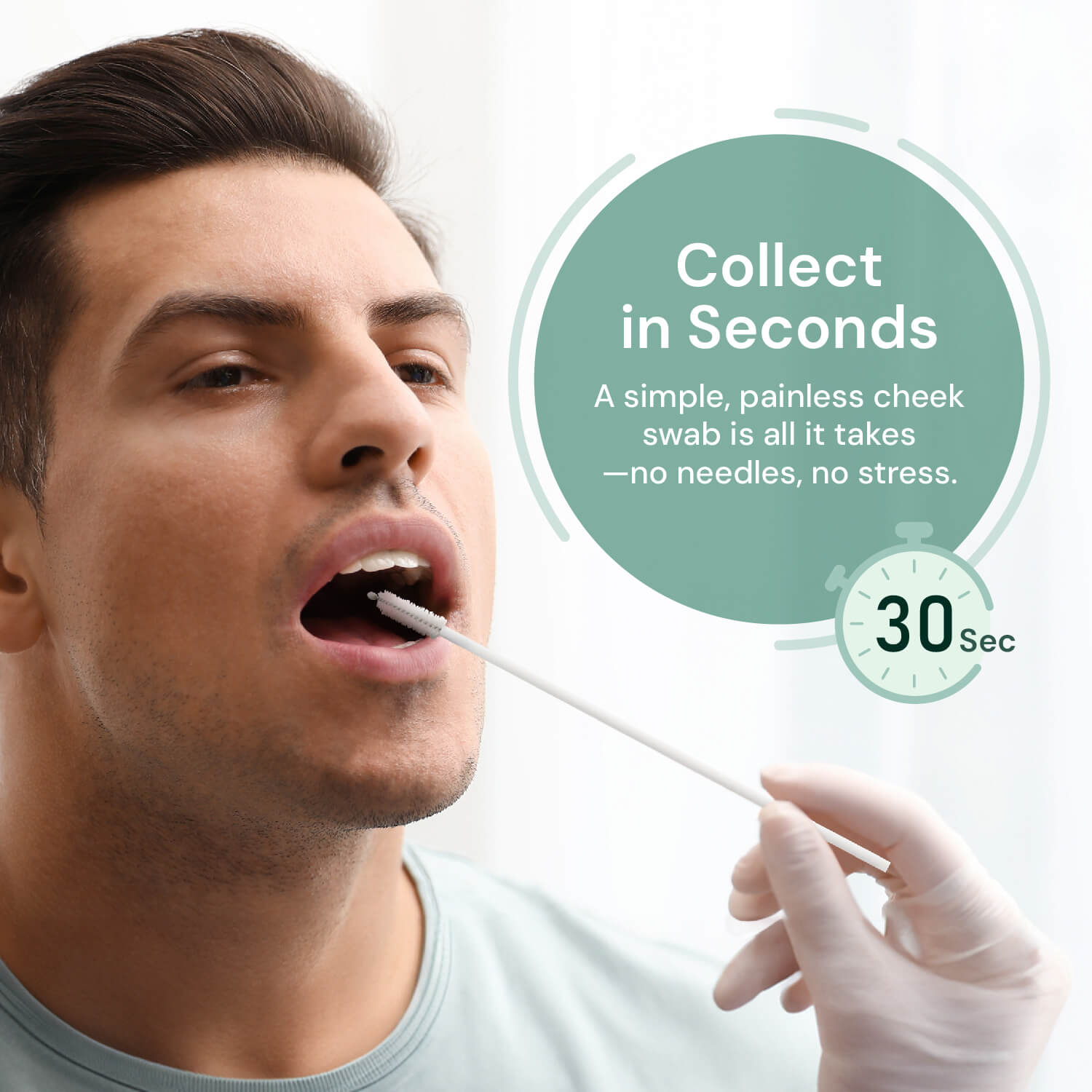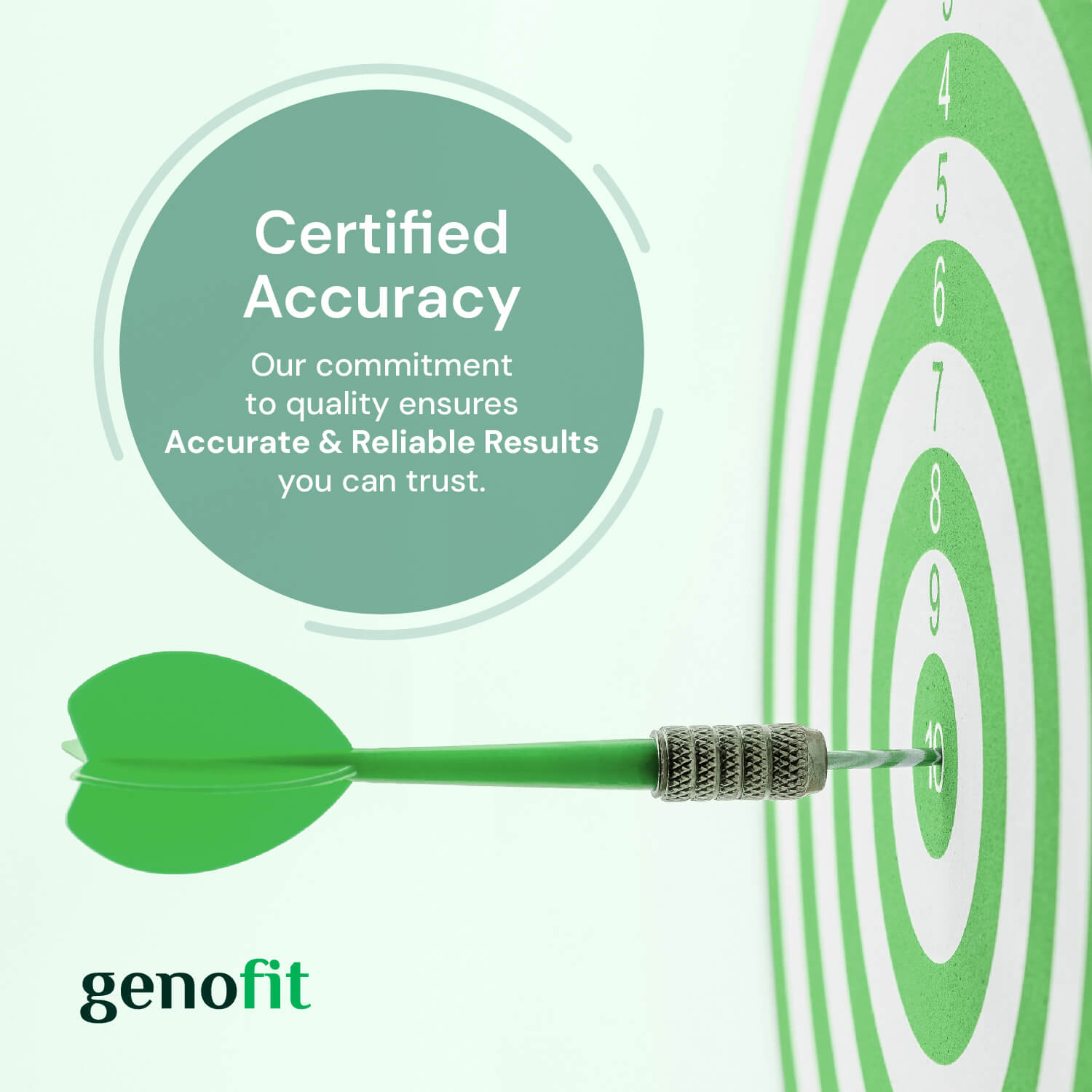DNA Thrombotic Risk
DNA Thrombotic Risk
Some people are genetically wired for a higher risk of blood clots. The Factor V Leiden mutation affects up to 1 in 20 people of European descent, a prothrombin mutation can increase risk up to four times, and MTHFR variants are even more common—yet most people have no idea they carry them.
The Genofit DNA Thrombotic Risk Test analyzes the four critical clotting mutations that significantly increase clotting risk. With a simple mouth swab, you can gain a clearer understanding of your genetic risk of hereditary clotting disorders.
Couldn't load pickup availability
- Turnaround Time
- 4-6 weeks
- Sample Type
- Mouth Swabs
- Genes Tested
- F5, F2, MTHFR
Share
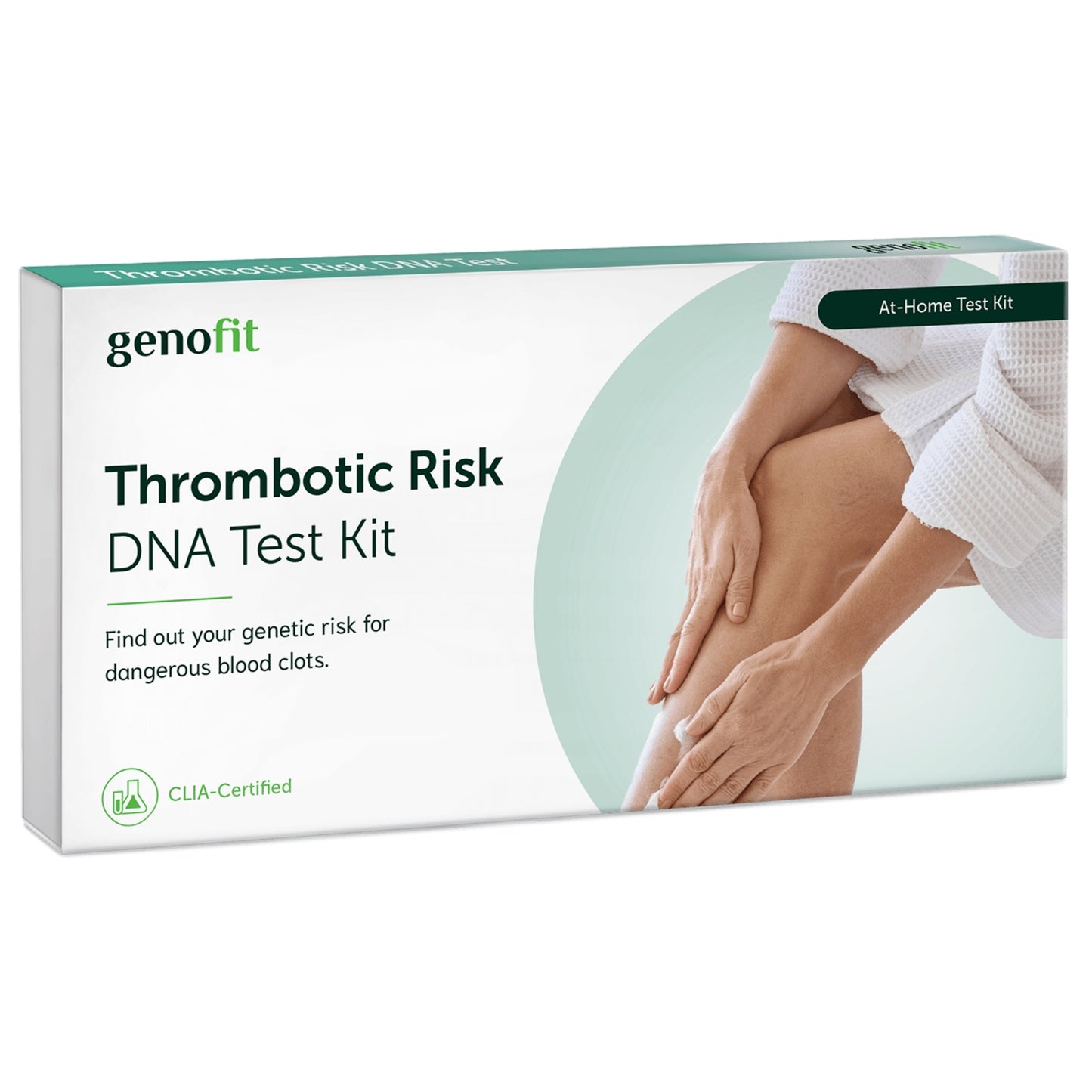

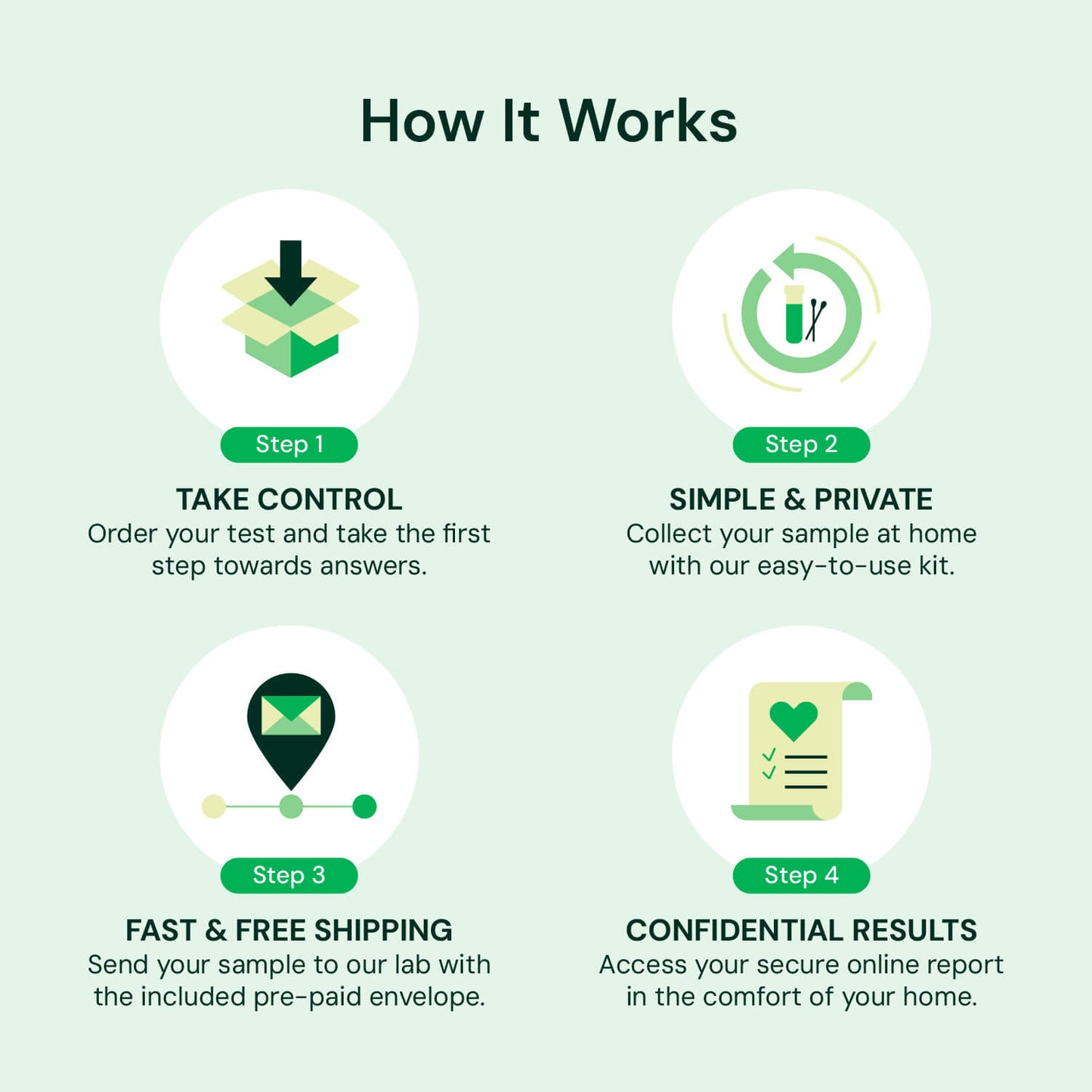

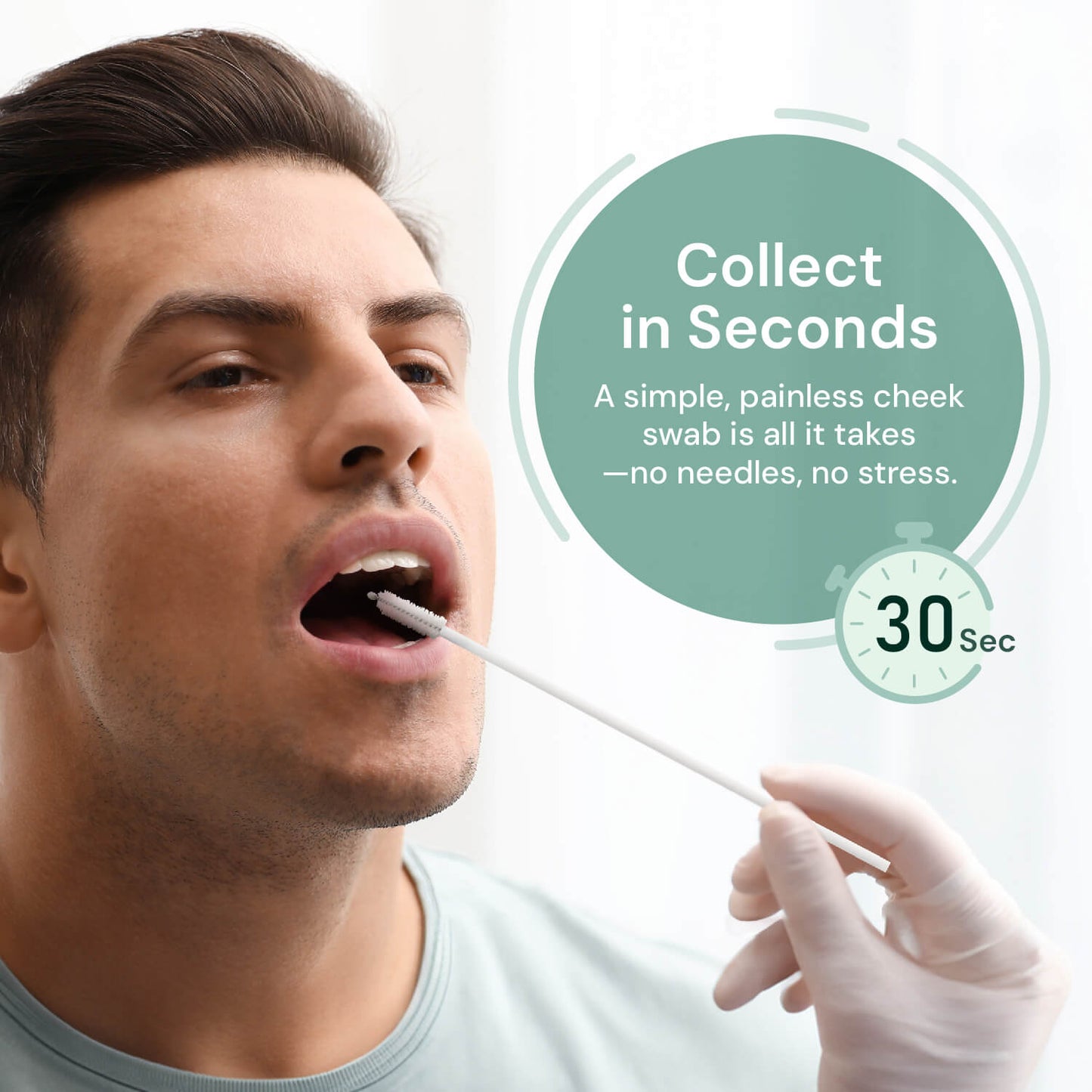

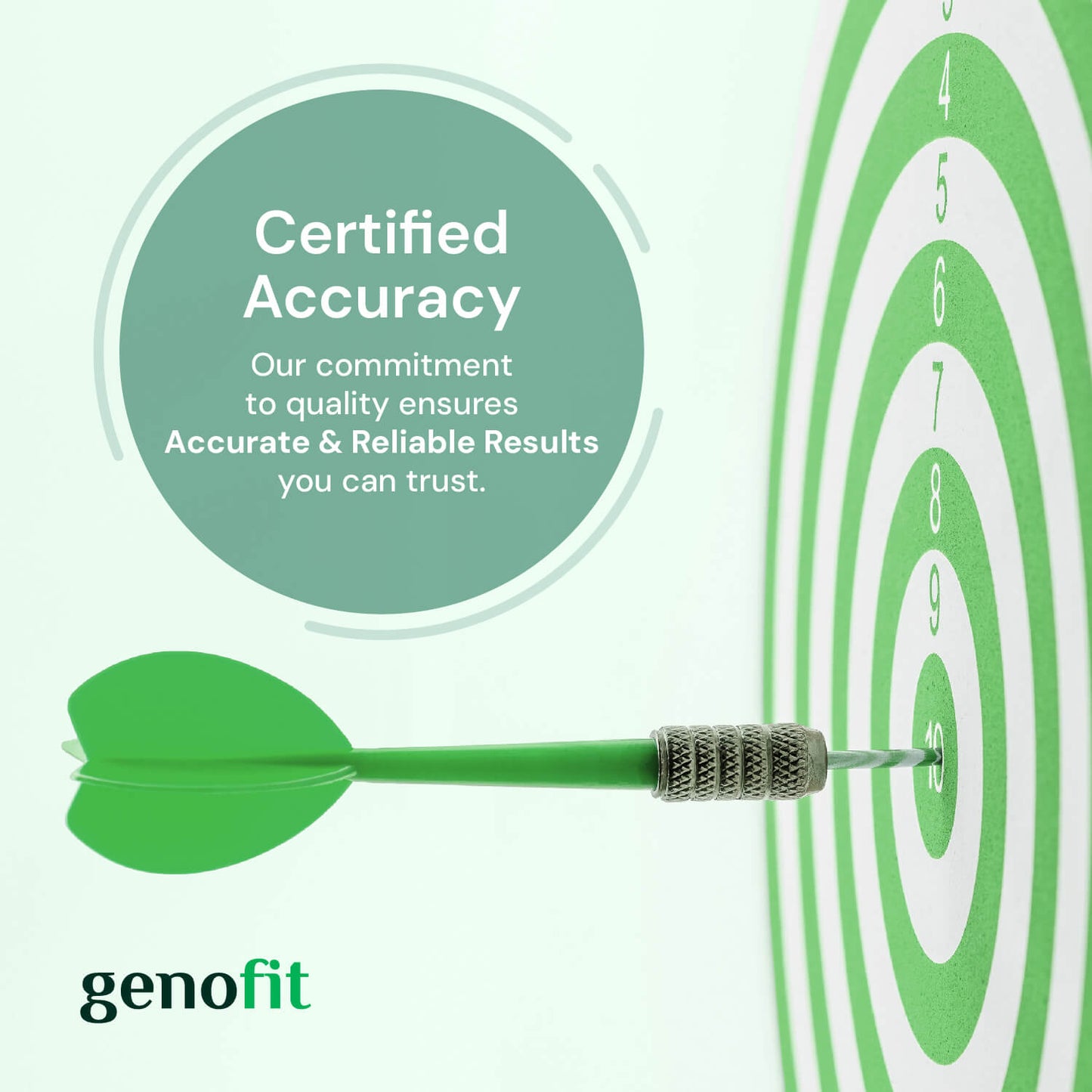

Benefits You’ll Love
Easy, Painless Mouth Swabs
Free delivery on all orders
Private & Confidential
Actionable Genetic Insights
Get Started in 3 Easy Steps
-

1. Purchase Kit
Order a Genofit test online and we'll ship your test kit directly to your doorstep.
-

2. Collect & Mail
Simply collect your sample at home, then mail your sample directly to the lab with free return shipping.
-

3. Receive Results
Download your report from your secure online account shortly after the lab receives your sample.
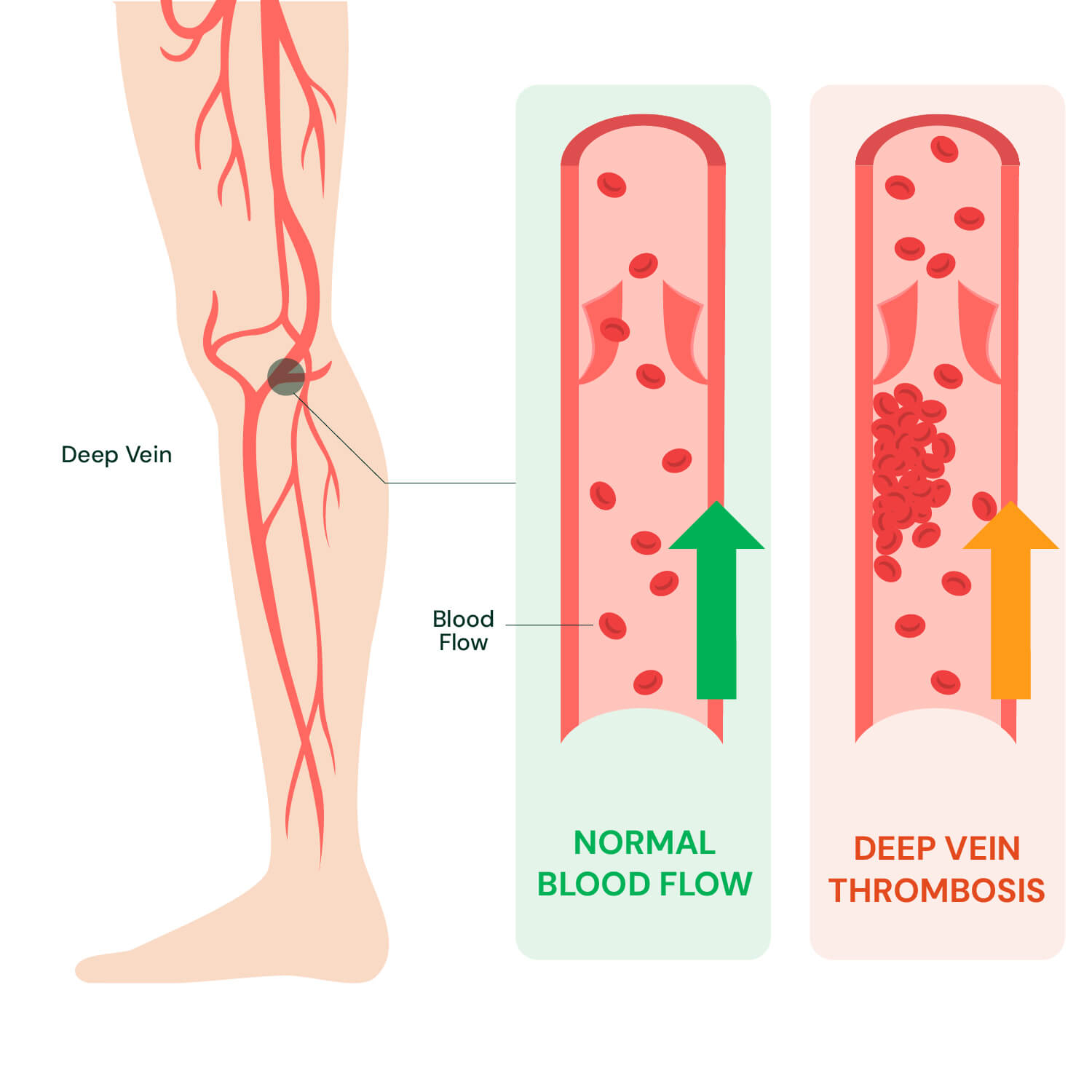
Why Genetics Matter for Blood Clotting Risk
Blood clots cause preventable deaths, but genetic mutations dramatically increase risk for some individuals. While lifestyle factors contribute to clotting, inherited variants can make your blood significantly more likely to form dangerous clots—often going undetected until a serious event occurs.
Three genes control blood clotting regulation. F5 and F2 directly affect clotting factors, while MTHFR influences homocysteine levels that impact blood vessel health. Knowing if you carry genetic variants that impact these genes can help explain a history of clotting or provide an early warning of a lifelong predisposition.
Comprehensive Analysis of 4 Critical Thrombotic Mutations
The DNA Thrombotic Risk Test analyzes specific mutations in three genes that are known to influence the body's clotting system. Understanding these genetic factors provides a clearer picture of your personal risk profile.
F5 Gene - The Factor V Leiden Mutation
This is the most common inherited factor for blood clotting disorders, present in 3-8% of people of European descent. The mutation makes a key clotting protein (Factor V) resistant to being "turned off," which can heighten clot risk, especially during pregnancy, surgery, or while using hormonal medications. Inheriting one copy can increase risk 3-8 times, while two copies can increase it 50-100 times over the baseline.
F2 Gene - The Prothrombin Mutation
This mutation causes the body to produce too much prothrombin, a primary protein needed for blood to clot. The resulting surplus can increase clot risk 2-4 times and is a common factor in unexplained clots, particularly in younger adults. The risk is significantly higher when combined with other factors like hormonal birth control.
MTHFR Gene - Two Common Mutations
These variants (677C>T and 1298A>C) affect how the body processes folate, which can lead to higher levels of an amino acid called homocysteine. Elevated homocysteine can damage blood vessel linings, potentially increasing clot risk. The 677C>T variant has a more significant effect, while the 1298A>C variant has a milder impact but can contribute to overall risk.
It's important to note that having mutations in more than one of these genes can multiply the overall risk. For example, carrying both a Factor V Leiden and a prothrombin mutation can increase the risk of a blood clot by 20 times or more.
Why Genofit?
-
Trusted for Accuracy
About the LaboratoryOur laboratory meets the highest standards with globally recognized accreditations to deliver reliable results every time.
-
Your Privacy Matters
Sign in to My AccountWe prioritize your privacy with a password-protected online portal, ensuring that your results are accessible only to you.
-
Support From Experts
Contact SupportOur dedicated customer care team is ready to guide you through every step, answer your questions, and provide the assistance you need.





